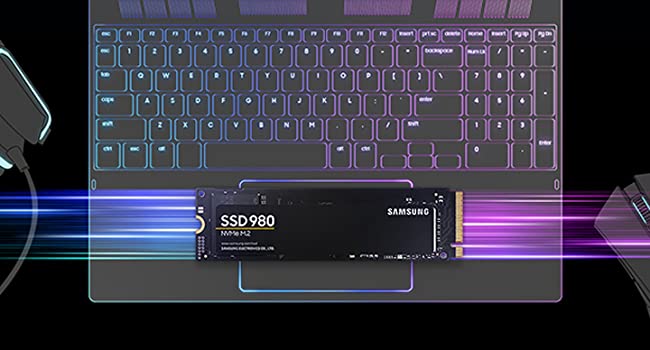Introduction
In the dynamic world of laptop technology, the quest for peak performance and seamless aesthetics has never been more paramount. As laptops increasingly become indispensable companions for both work and leisure, the role of storage solutions has taken center stage. Among these, the Solid State Drive (SSD) has emerged as a game-changer, heralding a new era of rapid data access and reliable efficiency.
In this comprehensive guide, we embark on a journey that explores the harmonious marriage of speed and style in the realm of laptop SSDs. Delving into the intricate tapestry of technological advancements and design elements, we navigate the terrain of selecting the best SSD for laptop experience to unprecedented heights.
Brace yourself for a deep dive into the realm of speed, where we unravel the intricate workings of SSDs that propel laptops to new dimensions of performance. From the groundbreaking NVMe vs. SATA debate to deciphering the nuances of read and write speeds, we demystify the technicalities that underpin the seamless boot-ups, swift application launches, and lightning-fast data transfers that SSDs bring to the table. Explore cache sizes and PCIe generations that offer a turbocharged pace for multitasking and resource-intensive tasks, enabling you to harness the full potential of your laptop’s capabilities.
Speed and Style: A Guide to the Best SSD for Laptop
When it comes to upgrading or choosing the best SSD for laptop, you’ll want to consider both speed and style to ensure optimal performance and aesthetics. SSDs are known for their speed, reliability, and energy efficiency, making them a popular choice for laptop storage.
Speed of SSD:
NVMe vs. SATA:
NVMe SSDs are designed to leverage the high-speed PCIe bus, resulting in significantly faster data transfer rates compared to SATA SSDs. They offer lower latency and higher IOPS (Input/Output Operations Per Second), making them ideal for tasks that demand quick access to data, such as booting up your laptop and running resource-intensive applications.
Read and Write Speeds:
SSD performance is often measured by its sequential read and write speeds. These speeds determine how quickly data can be read from and written to the drive. Faster speeds mean shorter boot times, faster application loading, and quicker file transfers. NVMe SSDs typically have higher read and write speeds compared to SATA SSDs, offering a noticeable improvement in overall system responsiveness.
Cache Size:
The cache in an SSD acts as a temporary storage area for frequently accessed data. A larger cache can enhance performance by allowing the drive to quickly retrieve data that’s needed by the operating system and applications. This is particularly beneficial when multitasking or working with large files.
PCIe Generation:
PCIe (Peripheral Component Interconnect Express) is a high-speed interface used for connecting SSDs to the motherboard. The PCIe generation (e.g., PCIe 3.0, PCIe 4.0) affects the maximum bandwidth the SSD can achieve. If your laptop supports a newer PCIe generation, opting for an SSD that utilizes that generation can result in faster data transfer rates.
Style of SSD:
Form Factor:
The form factor of an SSD determines its physical size and shape. M.2 SSDs are popular for laptops due to their compact size and direct connection to the motherboard. They are available in different lengths (like 2242, 2260, 2280) but typically share a narrow profile. This sleek design allows for easy installation and helps maintain a clean and uncluttered interior.
Aesthetic Design:
Some SSDs are designed with aesthetics in mind, featuring sleek metal casings, unique textures, and even RGB lighting. These design elements can add a personalized touch to your laptop’s internals, especially if your laptop has a windowed side panel that displays its internal components.
Durability and Build Quality:
The build quality of an SSD can impact its longevity and overall appearance. SSDs with premium materials and sturdy construction not only contribute to the overall aesthetic but also provide a sense of durability and reliability.
Slim Profile:
Slim-profile SSDs are designed to fit into tight spaces without adding unnecessary bulk. This is especially useful for thin and light laptops where space is limited. Opting for a slim-profile SSD ensures a seamless fit while maintaining the laptop’s slim design.
Remember to consider your specific use case and budget when selecting an SSD. While speed and style are important, ensuring the SSD meets your storage needs and is compatible with your laptop is paramount. As technology evolves, newer models may offer improved performance and design elements, so it’s a good idea to stay updated with the latest offerings before making a purchase.
Also read:- Refurbished Laptops India: What You Need to Know
Conclusion
In concluding our exploration of “Speed and Style: A Guide to the Best SSD for Laptop,” we’ve traversed the intricacies of two essential pillars that define the modern laptop experience. The marriage of speed and style within the realm of Solid State Drives (SSDs) has not only transformed how we interact with our laptops but has also ushered in a new era of unprecedented performance and visual aesthetics.
From the very outset, we set out to unravel the symbiotic relationship between speed and style. We dived into the world of SSD technology, uncovering the significance of NVMe over SATA, the impact of read and write speeds, and the role of cache and PCIe generations. These aspects collectively elevate your laptop’s efficiency, enabling smoother multitasking, faster data access, and an overall quicker and more responsive system.

